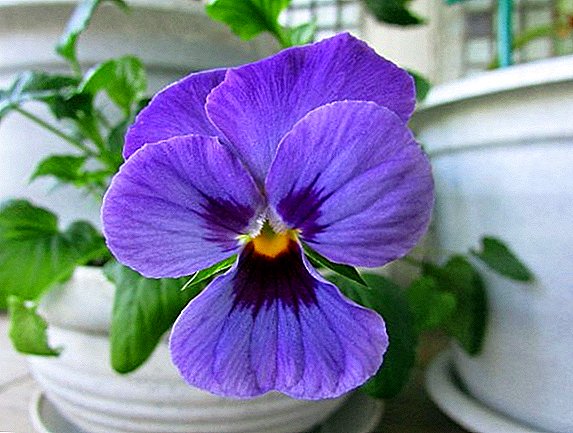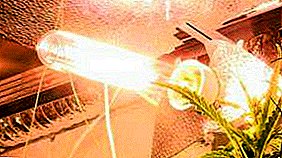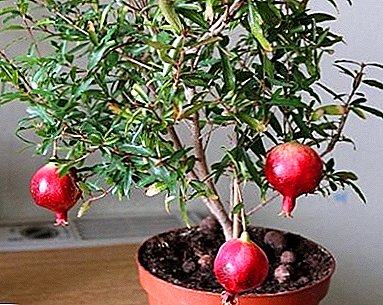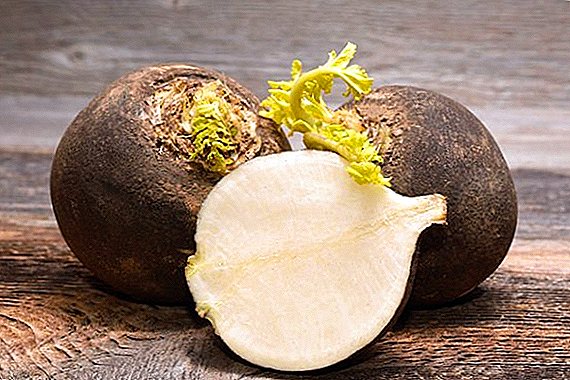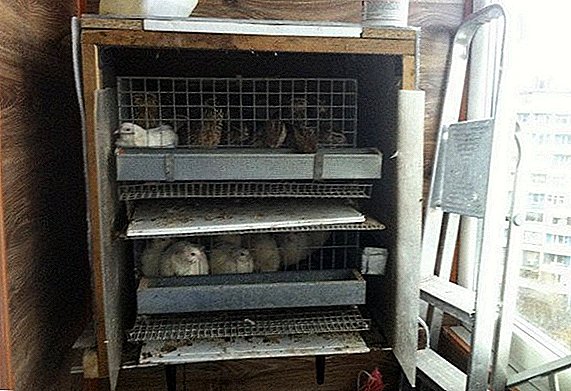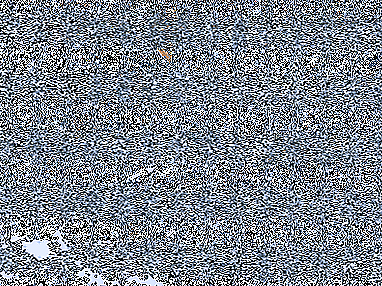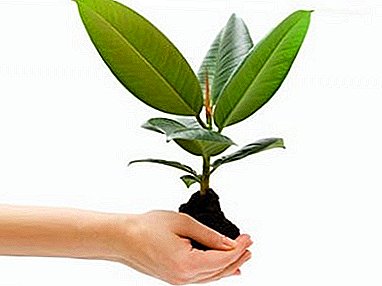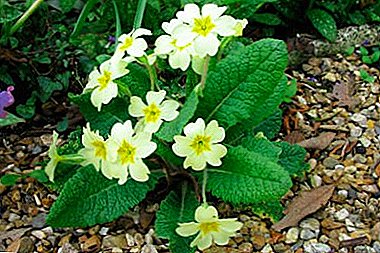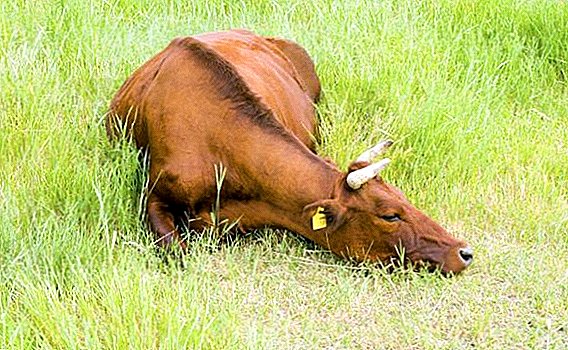 All cattle on the quality characteristics is divided into meat, dairy and mixed.
All cattle on the quality characteristics is divided into meat, dairy and mixed.
The article tells about the best dairy and beef breeds of cows bred in the Russian open spaces.
Consumption of beef and milk cows in Russia
Milk and cow meat have always been considered the most necessary food for the population. The table below shows the indicators of consumption of milk and beef by Russian citizens per capita over the past 3 years (according to the Ministry of Agriculture):
| Type of food | 2015 (kg / person) | 2016 (kg / person) | 2017 (kg / person) |
| Meat (beef) | 14,2 | 13,7 | 14 |
| Milk | 246 | 146,7 | 233,4 |
Breeds of dairy cows
Dairy cows are considered leaders in terms of productivity and efficiency among animals that produce milk: in one lactation, the volume of milk they have is the largest per unit of live weight. Next, we will talk about the most good breeds of the cows.
Ayrshire
Injection history: Ayrshire cows are from Scotland, Ayrshire county. They originated in the XVIII-XIX centuries, when local breeders, for obtaining better characteristics, crossed the following breeds of little cows for a century:
- Tisvaterskie;
- alderney;
- Dutch
Learn how to care for the Ayrshire breed of cows at home.
The breed was officially registered in 1862.  Exterior feature Ayrshire animals:
Exterior feature Ayrshire animals:
- red and white color;
- body elongated, with a sturdy construction;
- straight, wide back;
- deep, narrow chest;
- flexible joints and thin bones;
- middle head;
- massive lyre-like horns, set apart;
- slender neck;
- properly set limbs and strong hooves;
- bowl-shaped udder with wide-spread nipples;
- weight: cows - over 475 kg, bulls - more than 750 kg;
- average height - 125 cm.
 Productive indicators:
Productive indicators:
- The annual yield is 6000-7000 kg.
- Fat content - 3.8-4.0%.
- Protein - 3.4-3.6%.
- Tastes are high.
- The average lactation rate is 2.0 kg / min.
Important! When choosing dairy cattle, it is imperative to pay attention to the shape of the udder of cows: highly productive individuals have a large udder covered with a soft gun and a thick venous mesh, which after milking significantly decreases in size, forming a fold of skin in the back.
Golshtinsky
Injection history: Holstein cattle officially registered in the early 1980s in the United States. Before that, from the middle of the 19th century, black-speckled and red-motley cattle with high milk productivity were actively imported to the continent from the middle of the 19th century. Thanks to the long efforts of breeders who want to improve the milk performance of cows, the breed was bred, which is today known as the Holstein.
Exterior feature Holstein cows:
- black speckled suit, at least - red and motley;
- deep and wedge-shaped body;
- broad and long shoulders;
- wide back;
- udder - cup-shaped, large;
- height at withers - up to 145 cm;
- weight - 1000-1200 kg;
- horns - absent.
 Productive indicators:
Productive indicators:
- Annual yield - 7300 kg.
- Fat content - 3.8%.
- Protein - 3.6%.
- Tastes are average.
- The average lactation rate is 2.5 kg / min.
Read more about the features of breeding Holstein cows.
Dutch
Injection history: Dutch cows were bred by Dutch breeders more than 300 years ago due to purebred breeding. Representatives of the breed were brought to different countries and taken as the basis for breeding the following breeds of cattle:
- Ayrshire;
- Istobenska;
- Tagil.
 The Dutch breed is early ripening, insemination can be carried out in 14.5-18 months.
The Dutch breed is early ripening, insemination can be carried out in 14.5-18 months.
We recommend to learn more about the Dutch breed of cows.
Exterior feature Dutch cattle:
- suit - black and motley, with white "belts" behind the shoulder blades;
- massive, proportionally developed physique with a strong constitution and strong muscles;
- short legs;
- udder bowl-shaped, with properly placed nipples;
- elongated head;
- flat and straight back;
- wide and deep chest;
- torso length along a scythe - 157 cm;
- height at withers - 133 cm;
- the mass of the cow is 550-750 kg, the bull-700-1000 kg.
 Productive indicators:
Productive indicators:
- The annual yield is 3500-4500 kg.
- Fat content - 3.8-4%.
- Protein - 3.3-3.5%.
- Tastes are high.
- The average lactation rate is 2.3 kg / min.
Did you know? The number of ringlets on cow horns can tell how many times a cow has calved in its life, and thus determine the age of the animal. To do this, you need to count the number of rings and add two years to them (exactly that time the cow usually lives before the first calving).
Jersey
Injection history: animals of this breed were bred in the island state of Jersey (English Channel). Although there is no reliable data on its origin, from the middle of the 19th century, breeders brought a breeding book to this breed. Today, this breed fell in love with many breeders and became widespread.  Exterior feature jersey cow:
Exterior feature jersey cow:
- elongated proportional body;
- concave line of the back;
- flat edges;
- small head with wide forehead, concave profile, without horns;
- thin neck in folds;
- deep set chest and dewlap;
- improper planting of the croup with a raised tail;
- large bowl-shaped udder;
- incorrectly placed rear legs;
- light brown or reddish color;
- neck and legs darker on the back - with a black stripe (in males);
- mass of a bull - 650-750 kg, cows - 400-450 kg;
- height at withers - 123 cm
 Productive indicators:
Productive indicators:
- The annual yield is 4000-5000 kg.
- Fat content -4-5%.
- Protein - 3.5-3.7%.
- Tastes - high quality milk, with a pleasant smell and taste.
- The average lactation rate is 2.2 kg / min.
You will probably be interested to learn more about the content of the Jersey breed of cows.
Red steppe
Injection history: This type of livestock was formed in southern Ukraine in the 18th century due to the interbreeding of the following breeds of cows:
- angelic;
- red Ostfriesland;
- gray steppe;
- Simmental;
- other breeds.
The red steppe cow, as an independent breed, was singled out only at the beginning of the XIX century.
 Exterior feature Red steppe Burenka:
Exterior feature Red steppe Burenka:
- the suit is red, with different intensity of color, sometimes with white spots;
- elongated body with thin and light bones;
- slanting body length - 155 cm;
- the back is long and flat;
- wide in hip joints ass;
- the chest is deep;
- an elongated, small head surmounted by light gray horns;
- slender neck and dull withers;
- low, correctly set legs;
- udder is large, rounded;
- medium height - 126-130 cm;
- weight - 500-700 kg.
 Productive indicators:
Productive indicators:
- The annual yield is 4000-5000 kg.
- Fat content - 3.7%.
- Protein - 3.2-3.5%.
- Tastes - good quality milk, smell and taste - pleasant.
- The average lactation rate is 2 kg / min.
Did you know? At the time of Attila, the ruler of the Huns, his warriors used the original method of preserving and cooking corned beef: with long transitions, they put cow meat in the saddle, causing the product to beat off and lose liquid, and horse sweat sprinkled it well.
Black and motley
Injection history: Black-and-white cows appeared due to the efforts of the Dutch breeders, who had worked to obtain the breed in the XVIII-XIX centuries and used the following types of young cows for crossing:
- Dutch;
- Ostfrizian
 As a result of breeding, a cow was bred with excellent dairy indicators, but not distinguished by a strong constitution and susceptible to diseases. Only by the 20th century, the efforts of the breeders were crowned with success, and today black and motley pets are distinguished by good health and a strong build.
As a result of breeding, a cow was bred with excellent dairy indicators, but not distinguished by a strong constitution and susceptible to diseases. Only by the 20th century, the efforts of the breeders were crowned with success, and today black and motley pets are distinguished by good health and a strong build.
We advise you to learn how to care for the black-motley breed of cows.
Exterior feature black and white cattle:
- black skin with white spot;
- powerful and proportionate physique;
- elongated body;
- long head with an elongated muzzle;
- dark gray horns;
- medium, muscle-free, folded neck;
- medium chest;
- straight backline with wide rump;
- steady and even legs;
- bulky belly;
- a cup-shaped udder with unevenly developed lobes (posterior nipples close together);
- height - 130-132 cm;
- weight - 650-1000 kg.
 Productive indicators:
Productive indicators:
- The annual yield is from 3,000 to 8,000 kg.
- Fat content - 3.7%.
- Protein - 3.0-3.3%.
- Tastes - high-quality milk with a pleasant taste and smell.
- The average lactation rate is 2.1 kg / min.
Kholmogorskaya
Injection history: Kholmogor cattle is the oldest and most highly productive dairy type. He comes from Russia (from the Arkhangelsk province). The beginning of its origin can be considered the second half of the XVII - the first half of the XVIII centuries. The breed has a similarity with the black-motley view, but has a slightly greater angularity of forms and fewer muscles.
 Exterior feature Kholmogor breed:
Exterior feature Kholmogor breed:
- suit - black and white, red and motley, red or black;
- middle head with a narrow muzzle;
- slender neck;
- harmonious, elongated, strong and coarsely folded body with a moderately developed relief;
- straight back with a flat loin;
- wide ass with raised rump;
- chest with mild dewlap;
- Medium sized proportional udder with cylindrical nipples;
- skin is thick and elastic;
- high and steady legs;
- height - 130-135 cm;
- weight - 550-1200 kg.
 Productive indicators:
Productive indicators:
- The annual yield is 3500-5000 kg.
- Fat content - 3.6-3.8%.
- Protein - 3.3-3.5%.
- Tastes - high-quality milk with a pleasant taste and smell.
- The average lactation rate is 1.9 kg / min.
Important! To get dietary beef, cows need to be kept exclusively on grass, and not grain fattening.
Yaroslavskaya
Injection history: The origin of Yaroslavl cows dates back to the beginning of the 19th century in the Yaroslavl province (Russian state), where small cows with poor health and fragile bones were taken as the basis of breeding work to form modern Yaroslavl cattle.  Exterior feature Yaroslavl type of cows:
Exterior feature Yaroslavl type of cows:
- small body, angular and dry, with poorly developed muscles;
- black color with white head, lower legs, abdomen and udder;
- black rims around the eyes;
- a long, narrow head with narrow, light horns of medium thickness and length;
- dark, rough nose;
- thin, long neck pleated;
- small chest;
- large, round belly;
- straight backline with narrow sagging croup;
- thin skin with no fatty layer;
- short limbs with large joints;
- the udder is large and folded, with long nipples, covered with fluff;
- height - 125-127 cm;
- weight - 460-1200 kg.
 Productive indicators:
Productive indicators:
- The annual yield is 4500 kg.
- Fat content - 3.8-4%.
- Protein - 3.4-3.7%.
- Tastes - good quality milk.
- The average lactation rate is 2.0 kg / min.
We recommend to read more about the Yaroslavl breed of cows.
Meat cattle breeds in Russia
In cows of meat breeds, the physiological processes of the body are aimed at building muscle mass while using feed efficiently. In this type of livestock, milkiness is not very high and is mainly aimed at feeding the young. Below is an overview of animals of meat orientation.
Aberdeen-Angus
Injection history: Aberdeen-Angus beef cattle are native to Scotland, from the counties of Aberdeen and Angus, where in the XIX century local breeders tried to improve the meat breeds of hornless black color cows. Today, Aberdeen-Angus cattle, due to their acclimatization properties, is distributed practically on all continents.
 Exterior feature Aberdeen Angus cows:
Exterior feature Aberdeen Angus cows:
- the suit is red or black;
- head heavy, komolaya (without horns);
- the body is wide, with well-defined meat forms and fatty layers;
- top line is flat;
- skeleton thin (18% by weight);
- short neck blends with shoulders and head;
- well-made sacrum and loin;
- well developed ham muscles;
- elastic, thin, friable skin;
- legs are saber-shaped;
- torso length along a scythe - 138-140 cm;
- height - 125-150 cm;
- weight - from 500 to 1000 kg.
 Productive qualities:
Productive qualities:
- The earliness of weight gain is 750-800 g / day.
- Slaughter meat yield - 63%.
Learn how to care for the Aberdeen-Angus breed of cows.
Galloway
Injection history: Gallow cattle is one of the oldest not only in the UK, but throughout the world. The formation of the breed began in the 17th century, when breeders from northern Scotland tried to improve the performance of local herds.
 Exterior feature Galleve cows:
Exterior feature Galleve cows:
- color - black, sometimes red or gray;
- thick, curly hair up to 20 cm;
- tight bones;
- extended barrel-shaped body;
- short and wide head;
- horns absent;
- folded, short neck with a well developed occipital crest;
- quite wide chest (girth - up to 2 m);
- height - up to 145 cm;
- weight - 550-1000 kg.
 Productive qualities:
Productive qualities:
- The earliness of weight gain is 850-1000 g / day.
- Slaughter meat yield - 65-70%.
Important! The effectiveness of beef cattle breeding depends entirely on breeding, technological, veterinary-sanitary and organizational factors.
Hereford
Injection history: Hereford breed cattle were bred in England (Herefordshire) in the 18th century. The basis was taken from the red cattle of the south-western regions of the country, which was used by breeders to obtain animals as a source of meat and pigtails.
 Exterior feature Hereford cattle:
Exterior feature Hereford cattle:
- suit - dark red body;
- white head, neck, lower limbs and caudal brush;
- horns - white, with dark edges;
- body squat, barrel-shaped, wide;
- thick skin;
- strongly protruding flank;
- legs - steady, short;
- udder - mild;
- body length along a scythe - 153 cm;
- height - 125 cm;
- weight - 650-1350 kg.
 Productive qualities:
Productive qualities:
- The earliness of weight gain is 800-1250 g / day.
- Slaughter meat yield - 58-70%.
Kazakh Whitehead
Injection history: In the early 1930s, breeders from Kazakhstan and the South-East of Russia bred a white-headed Kazakh cow, for which the genes of the following types of livestock were used:
- Hereford;
- Kalmyk;
- Kazakh.
 Thanks to the breeding work done, Kazakh white-headed cows inherited high meat indices and endurance from the original ancestors.
Thanks to the breeding work done, Kazakh white-headed cows inherited high meat indices and endurance from the original ancestors.
Read more about the Kazakh white-headed breed of cows.
Exterior feature Kazakh white-headed cows:
- the suit is red, and the head, dewlap, belly, legs, and tail brush are white;
- strong bones with well-developed musculature;
- body - barrel-shaped;
- basement - tight, protruding;
- short, strong legs;
- elastic skin with fatty tissue;
- short and smooth coat in the summer, and in winter - long, thick and curly;
- height - 130 cm;
- oblique body length - 155-160 cm;
- weight - 580-950 kg.
 Productive qualities:
Productive qualities:
- The earliness of weight gain is 800 g / day.
- Slaughter meat yield - 55-65%.
Kalmyk
Injection history: Kalmyk cows were bred in the middle of the 17th century due to the long-term improvement of livestock, driven by Kalmyk nomads from the west of the Mongolian state.
 Exterior feature Kalmyk cattle:
Exterior feature Kalmyk cattle:
- color - red with different shades, sometimes has white stripes on the back and white markings on the sides;
- light head with horns bent by crescent;
- fleshy neck with wide withers;
- wide chest;
- dewlaw is medium muscular;
- double thick skin;
- wide set ribs;
- body of harmonious constitution and strong constitution;
- the back is wide;
- powerful chest;
- legs are of medium height, strong, correctly set;
- small udder;
- body length - 160 cm;
- height - 128 cm;
- weight - 500-900 kg.
 Productive qualities:
Productive qualities:
- The earliness of weight gain is up to 1000 g / day.
- Slaughter meat yield - 57-65%.
Limousine
Injection history: Limousin cows were bred in the XVIII-XIX centuries. thanks to the breeding efforts of French breeders from the province of Limousin, using for this the local cattle.
 Exterior feature limousine cows:
Exterior feature limousine cows:
- suit - red, golden-red, red-brown with a light shade on the belly;
- short head with a broad forehead;
- harmoniously folded body with well-defined meat forms;
- slight deposition of adipose tissue;
- thin bones;
- deep chest;
- short head with large forehead;
- short, folded neck, turning into a wide chest;
- round ribs;
- strong, short legs;
- horns and hooves of a light shade;
- nasal mirror and eyes are brightly bordered;
- udder - underdeveloped;
- height - 140 cm;
- weight - 580-1150 kg.
 Productive qualities:
Productive qualities:
- Earliness of weight gain - up to 900 g / day.
- Slaughter meat yield - 65-70%.
Did you know? The sandwich meat sandwich got its name in honor of the famous card player, Count Sandwich, who during a card game, in order not to get his hands dirty, put slices of meat between two bread slices.
Santa Gertrude
Injection history: Santa-hertruda breed cows created in the middle of the XX century. farmers from the US state of Texas on the farm of the same name Santa Gertrude. In selective work were used the following types of cows:
- indian zebu;
- short horn
 Exterior feature Santa-Hertruda Cows:
Exterior feature Santa-Hertruda Cows:
- color - cherry red, sometimes there are white markings on the bottom of the belly;
- the body is large, wide, meat-shaped;
- head with drooping ears;
- deep chest has a wide dewlap;
- elongated back;
- the males at the withers have a hump;
- neck in folds;
- strong and dry legs;
- short and shiny coat;
- weight - 760-1000 kg.
 Productive qualities:
Productive qualities:
- The earliness of weight gain is up to 800 g / day.
- Slaughter meat yield - 63-65%.
Sharolezskaya
Injection history: Charolais breed originates in the XVIII century, when French breeders engaged in breeding cattle with meat characteristics and precocity. In their work, they took as a basis several breeds:
- cattle from Charolais district;
- Simmental;
- short horn
 Exterior feature Charolais cattle:
Exterior feature Charolais cattle:
- Suit: cows - white-gray, bulls - dark gray;
- short head;
- forehead wide;
- poorly developed dehydration;
- muscular and large body, there is a thin fatty layer;
- thin hair coat;
- the back is wide;
- powerful chest;
- well-developed ham;
- correctly set limbs;
- hooves and horns have a wax shade;
- height - 135-150 cm;
- weight - 750-1100 kg.
 Productive qualities:
Productive qualities:
- The earliness of weight gain is up to 800 g / day.
- Slaughter meat yield - 60-70%.
Shorthorn
Injection history: Shorthorns - one of the oldest breeds in the world, got its name because of the short horns. It began in the XVIII century in the north-east of England.
 For this purpose, the following cows were used:
For this purpose, the following cows were used:
- local short-legged cattle;
- Galloway;
- Dutch
It is useful to learn about the features of care for the Shorthorn breed of cows.
Exterior feature Shorthorn Cows:
- color - red-motley, with white spotting in the lower chest, limbs, abdomen and hams;
- barrel-shaped wide body with good musculature;
- small, lightweight head with a broad forehead;
- short, curved horns;
- thick, short neck;
- wide, round chest;
- long broad withers;
- soft, supple skin;
- soft, curled wool;
- straight line of the back and waist;
- well set, short, strong limbs;
- height - 130 cm;
- weight - 600-950 kg.
 Productive qualities:
Productive qualities:
- Earlier weight gain - up to 1200 g / day.
- Slaughter meat yield - 68-70%.
Finishing the review of the best dairy and beef cattle breeds, we emphasize that all types of the above mentioned cows are well adapted to the conditions of the Russian open spaces and give sufficient gains of meat and milk yields, which directly depend on proper feeding and good animal welfare.


